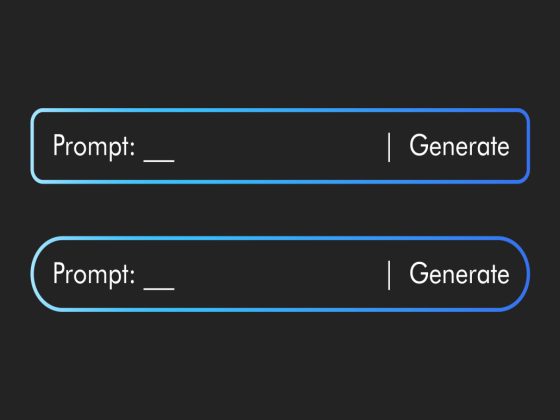What is Prompt Engineering? A Detailed Guide – VeriiPro
Meta Description: Take a deep dive into prompt engineering and understand how it can enhance generative AI models. Learn about its techniques and real-world applications.
Artificial Intelligence (AI) Jobs and Careers to Consider in 2024
Artificial Intelligence (AI) is quickly changing organizations and even entire industries globally. These significant advancements have created valuable and highly lucrative job opportunities for skilled professionals, especially in fields such as AI development, machine learning, and prompt engineering.
Prompt engineering is a rapidly growing field of AI development that plays a key role in helping individuals leverage the power and capabilities of different AI models, tools, and solutions. By carefully crafting and using the right prompts, prompt engineers effectively guide AI solutions to produce extremely relevant, informative, and valuable output. According to McKinsey, 7% of businesses that have started incorporating AI into their processes have hired employees with prompt engineering skills over the past year.
In this detailed guide, we will help you answer key questions such as ‘What is prompt engineering?’, ‘What is the best way to think of prompt engineering?’, ‘What is an example of using roles in prompt engineering?’, ‘How to become a prompt engineer?’ and much more. By clearly dissecting the AI prompt engineering field, the average AI prompt engineer salary, and available opportunities for prompt engineer jobs, this article will help you learn everything you need to know about the prompt engineering industry.
What is a Prompt?
In the AI industry, a ‘prompt’ is an input (usually text-based) that provides instructions or a starting point for AI models to generate an output. At its core, a prompt is a question, instruction, or request to an AI model that helps guide the tool towards a specific desired outcome.
A prompt may be a question or a command that guides the tool toward creating text, images, or other output. A well-drafted prompt has the ability to control the quality, relevance, accuracy, and creativity of AI output.
For all intents and purposes, a prompt is a conversation starter for AI models like ChatGPT or Gemini—setting the tone, context, and intention for the tool’s response.
Why is Prompt Engineering Important?
Prompt engineering plays a pivotal role in helping businesses unlock the complete potential of AI models. Are you wondering what is the best way to think of prompt engineering? Here are a few reasons why prompt engineering is now more important than ever:
More Precise and Accurate Output
Prompt engineering is an extremely important factor in ensuring that outputs from AI models are precise, accurate, and relevant. Clear and well-structured prompts that provide exact instructions, context, and specific examples for what the desired output is, almost completely eliminate ambiguity and guide AI models towards generating targeted output.
This means that businesses will be able to take advantage of more refined, reliable, and precise responses than ever before. This level of quality for AI responses is especially important in industries like healthcare and finance. For example, if generative AI is being used to automatically create treatment plans and patient diagnoses (for healthcare organizations) or for financial reporting and summarizing documents (for financial teams), it is crucial for output to be exact and free of errors.
Prompt engineering ensures that AI models and tools provide output that meets organizational accuracy requirements. By refining the way information is requested from AI tools, the reliability of entire systems can be improved.
Increased Efficiency and Lower Costs
Beyond just improving accuracy, prompt engineering also plays a key role in increasing the efficiency of AI-dependent processes and reducing overall operational costs. Effective prompts allow AI models to provide high-quality output with much fewer iterations and rework. This reduces the amount of resources, time, and power required to process large volumes of data and obtain the right results.
Increased efficiency through these types of process automation directly leads to higher cost savings over time, especially in industries where multiple requests and tasks are processed per day such as content generation and customer service. Well-structured AI prompts also ensure that issues and queries of varying levels of complexity are addressed much faster—leading to quicker decision-making processes and more streamlined workflows.
This means that prompt engineering is an essential asset for organizations trying to scale up their AI-dependent processes while keeping costs low.
More Creative Responses
While most AI models have built-in mechanisms to provide creative solutions and results to user queries, the right prompt is a game-changer for obtaining more imaginative responses. Adjusting prompts to encourage AI models to explore available data and focus on creative thinking usually leads to much more unique and diverse responses. Different formats, styles, and tones for prompts can even encourage some AI models to incorporate entirely new perspectives and information.
In fields where creativity is a crucial factor for success such as advertising, marketing, and entertainment, prompt engineers can be leveraged to access much more imaginative and engaging output.
Personalized Output For Different Industries
Every industry has its own unique requirements. Therefore, the ability to use customized prompts and instructions to create personalized and context-specific responses based on the unique nuances and trends in each industry is transforming the modern business landscape.
Prompt engineering allows businesses to incorporate industry-specific terminology, data, and trends into prompts, helping AI models build responses that are tailored to the unique needs of a specific process, client, or industry.
Smarter Human-AI Collaboration
The prompt engineering industry is ultimately geared towards establishing and strengthening communication and partnership between humans and AI. This leads to smarter, more effective collaborations that allow users to control AI models more productively and intuitively.
Prompt engineering improves human-AI interaction by providing ideas, suggestions, and output that complement and improve human creativity and decision-making. Leveraging the output and content generated by AI solutions bridges the gap between human and machine intelligence, allowing businesses to achieve their goals much faster.
This is especially apparent in fields such as software development, data analysis, and research, where prompt engineering turns AI tools into a collaborative partner that manages routine tasks and problems independently.

Prompt Elements
Effective prompt engineering relies on various key components that significantly shape the quality of AI responses. Focusing on elements such as the right keywords, instructions, context, examples, and your desired format guides AI models to create the best output for your needs.
Keywords
Keywords form the foundation of any effective prompt, serving as key pieces of information that help AI tools generate the right output. Keywords are specific words, phrases, or terms that directly relate to your desired output and tell the model what the response should center around.
Selecting the right keywords is the first step in setting the direction for the AI tool. The chosen keywords have a significant impact on the precision, relevance, and accuracy of the output.
Instructions
Clear and detailed instructions provide guidelines that shape how the AI interprets the prompt and the style, tone, or format of generated content. The right set of instructions is extremely beneficial for managing your expectations, making your preferences clear, and specifying what the AI should do with the information you provide.
Context
Context within a prompt helps AI models understand the broader background and intention of the prompt. Providing comprehensive and all-encompassing context is extremely important, especially for more complex queries where AI models may need to build responses for specific organizational situations or industry frameworks.
Prompts with a high level of context usually include relevant figures, metrics, key events, and facts that significantly improve generated responses.
Examples
Using examples in your prompts is a great way to guide AI models toward the style, format, structure, and tone of your desired output. Examples offer clear indications of what you’re looking for, which helps AI models identify and learn patterns and generate more accurate results over time.
Desired Format
Prompts are also a vital way to communicate the desired format of output and responses. This usually involves specifying the length of sentences, number of paragraphs, and preferred formatting elements.
For example, if an organization is using an AI model to summarize a document into a list of short pointers, it may be helpful to include the desired format of this summary in the initial prompt.
Prompting Techniques
Prompting techniques are great ways to ensure that your AI models drive high-quality, relevant, and accurate output. These techniques and strategies are key to optimizing the interaction between you and your AI systems.
1. Avoid Ambiguity
When crafting prompts, it is important to avoid vague or ambiguous language that could lead to a lack of clarity or understanding. Be as specific as possible with your language and intended output. Use precise language and avoid phrases or terms that could potentially be interpreted in different ways. Avoiding uncertainty ensures that results are tailored and perfectly aligned with your exact needs.
2. Stay Concise
Ensure that your prompts are as concise and straightforward as possible. Try to avoid unnecessary details that may unintentionally confuse the AI model. A well-drafted prompt should provide enough details and accurately convey your desired outcome without diluting your intended message.
For example, instead of writing a long prompt with unnecessary data that may not optimize your response, try writing a shorter prompt that will lead to a more straightforward and efficient answer.
3. Be Specific
Without creating an excessively long prompt, try to provide as much relevant detail to the AI model as possible. The more specific your prompt is, the more likely you are to receive a relevant and accurate output.
Prompt Engineering Applications
Prompt engineering has a variety of potential applications across multiple industries. This emerging career path has played a pivotal role in enhancing the functionality, productivity, and effectiveness of various AI systems.
In customer service, well-crafted prompts help AI chatbots generate context-aware and efficient responses that play an important role in improving customer satisfaction. In content creation, prompt engineering is used to produce high-quality text content, product descriptions, and social media posts that are automatically tailored to the context, style, and tone of the intended audience.
With numerous organizations now focusing on integrating generative AI into their workflow, prompt engineering is expected to grow exponentially in the next few years. As AI technology continues to transform industries, prompt engineering is set to revolutionize the future of artificial intelligence.
Final Takeaway
Prompt engineering is a powerful tool that has proven to be invaluable for enhancing the capabilities of AI models and tools. By carefully crafting and reviewing existing prompts, prompt engineers help organizations produce higher-quality and more relevant output.
From content creation to development to marketing, prompt engineering has a diverse range of applications across numerous industries. As AI tech continues to evolve and advance, the prompt engineering industry is only growing larger. By mastering this skill, your business will be able to unlock the whole potential of AI and support better organizational outcomes.
Click here to get hired today and learn more about prompt engineering roles near you.









